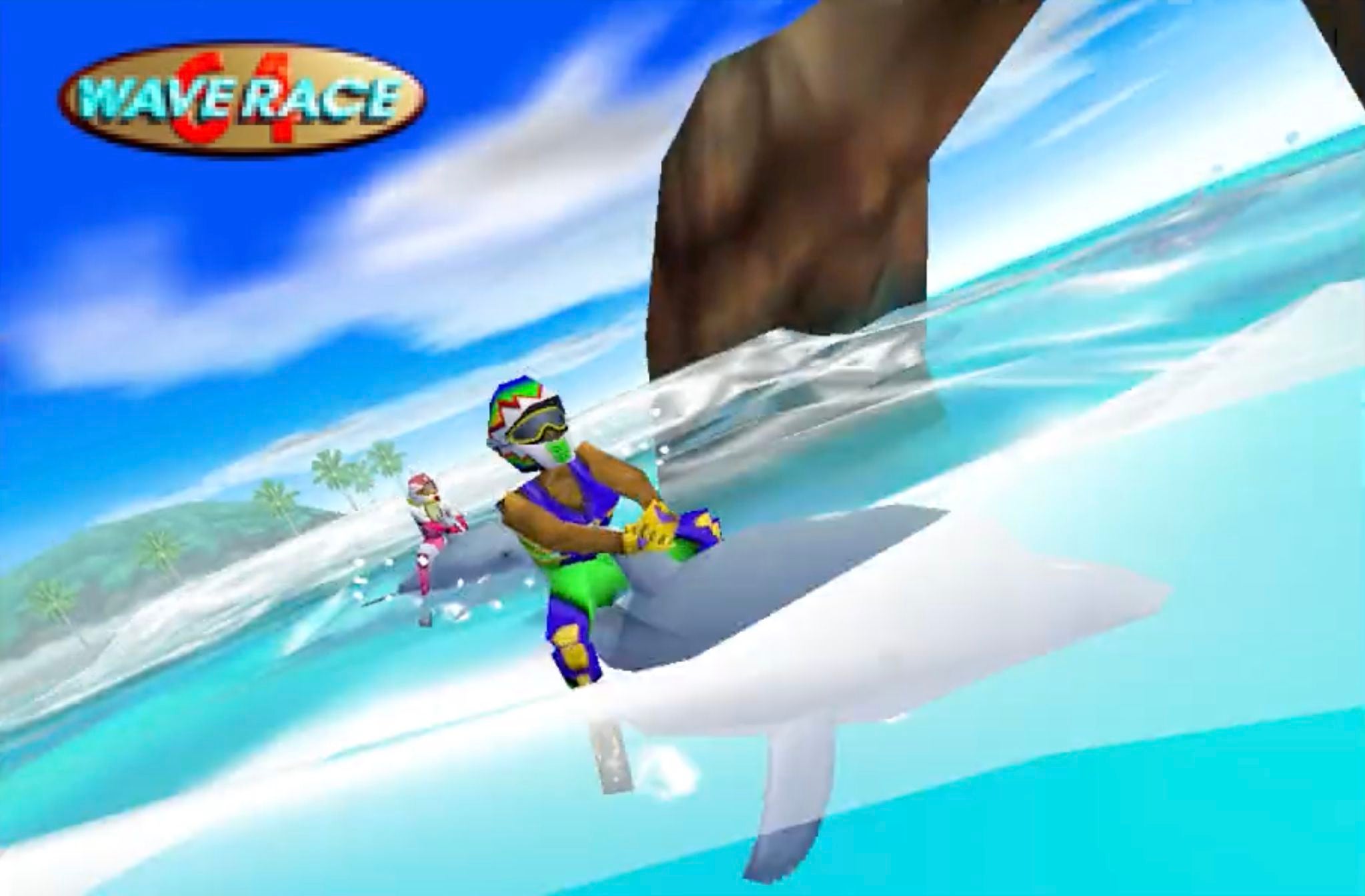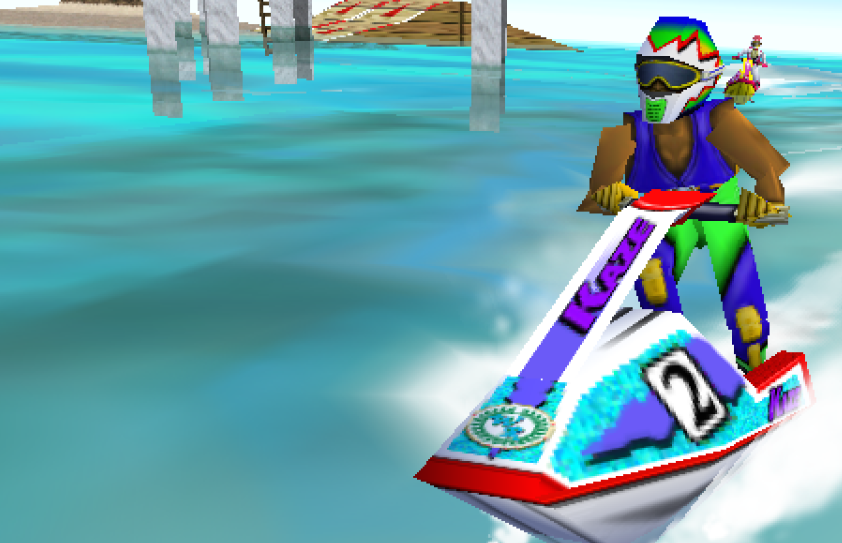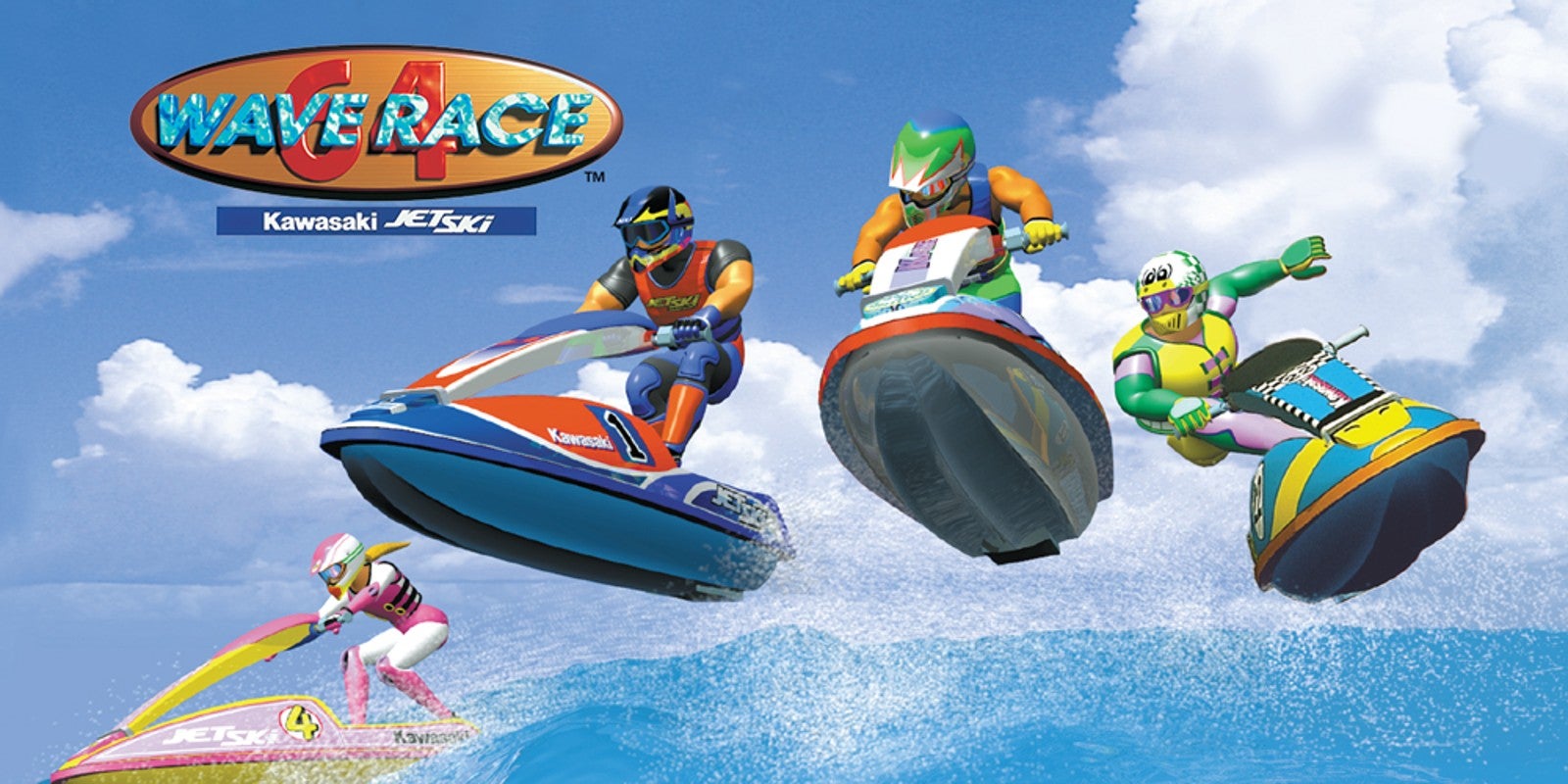As an N64 first party exclusive, Wave Race 64 was designed to work tightly with the hardware – not just in regards to the obvious visual and technical feats, but how it took full advantage of the then fairly new concept of analog control.
One of the best sensations in any racing game is when you pull the stick down towards you, either slightly left or right, and have the jet ski carve through the water and turn back on itself. It’s almost impossible to describe accurately, but it is so intuitive and instinctive. It just feels right. You can jump into the Dolphin Park training course with zero knowledge of the controls and within minutes of just experimenting and playing aroun, you’ll know exactly what you can and can’t get away with when it comes to the handling and begin to start tearing across the water.
The water. THAT water. The water effects in Wave Race 64 are what elevate it from a merely good game to a really special one. First off, they’re still super impressive with very little actually bettering it in the 26 (!) years since release. Crucially, however, they are a key part of the gameplay and mastering Wave Race. They achieve two important things; when you’re first playing Wave Race 64 or simply playing it casually, the realistic motion of the ocean gives you something to work with and against as you race around the uniformly excellent tracks. It adds a unique flavour to the racing and makes Wave Race 64 instantly memorable.
Once you dig a little deeper, hit the harder difficulties, or try to go for quicker lap times, you’ll notice the waves appearing at similar times on every lap. They’re not randomised – they’re all triggered at set points around the courses – and you’d think that this would perhaps ruin the magic a bit but it actually has the opposite effect and shows how ingrained into Wave Race’s racing the water actually is. You have to learn when to stomp through them and when to use them to your advantage.
A great example of this is on the Marine Fortress track. Right at the start there’s a big concrete sea wall that you have to race around. However, if you’re brave and accelerate right towards it, a big wave appears and allows you to leap off the crest of it and clear the wall for a significant shortcut. To avoid things being too mechanical, you have to take into consideration elements like the speed of your approach(going too fast or slow will cause the wave to be in an unfavourable position when you hit it), so there’s still some room for in-the-moment adaptation.
The waves aren’t always positioned for your benefit, either. Some appear on sharp corners or in tunnels, causing you to take to the air and wipe out if you’re not ready for them. The waves going from something you simply react to, to something that you’re actively learning and trying to work strategies around, is a very satisfying skill journey.
The courses are all excellent. There are eight in total, with six available in the first championship with the other two being added one by one as you go up the difficulties. As well as the usual differences in structure and complexity, they also have variances in regards to water movement, size and frequency of waves. For instance, Marine Fortress is set out at sea and has you dealing with waves aggressively crashing against its walls, while Drake Lake has none at all, acting as a faster ‘sprint’ style race across stillwater.
The best thing about these courses is how they all have their own unique vibe. The aforementioned Drake Lake, with its beautiful mirrored surface and fog that lifts as you go through the laps. Sunset Bay, a big orange ocean of Irn Bru with dolphins that swim alongside you. Port Blue, an action-packed chase around (and sometimes through) giant tankers. As you increase difficulty, some of the early tracks gain new, more challenging routes. A sluice gate opens in Marine Fortress on the second and third championships that reveals a twisty, turning path that almost halves your lap times.
Wave Race 64 is actually made up of slalom races, with yellow and red buoys requiring you to pass either left or right of them. Pass five in a row and you get a full speed boost, miss one and you’re significantly slowed down. Miss five overall and you’re disqualified. As you move up through the difficulties, the position of these buoys is changed, requiring not only more skilled handling of the jet ski to navigate them all but also allow for a subtle reshaping of the course. It might not be as obvious a change as the aforementioned sluice gate opening a new route, but the buoys forcing you to take wider or sharper corners definitely gives each course a little variance.
As a Switch Online title, there’s the usual caveat that there may be some emulation issues that Nintendo may need to resolve and – although you can play a sort-of online multiplayer with Switch Online releases – Wave Race 64’s strongest suite was never its multiplayer, which was restricted to two players, no AI competitors and some significantly reduced water fidelity (which is kind of missing the whole point).
Regardless, Wave Race 64 is a great addition to the service and offers a great opportunity to try out one of Nintendo’s most unique and best racing games from a console that was jam packed with them.



